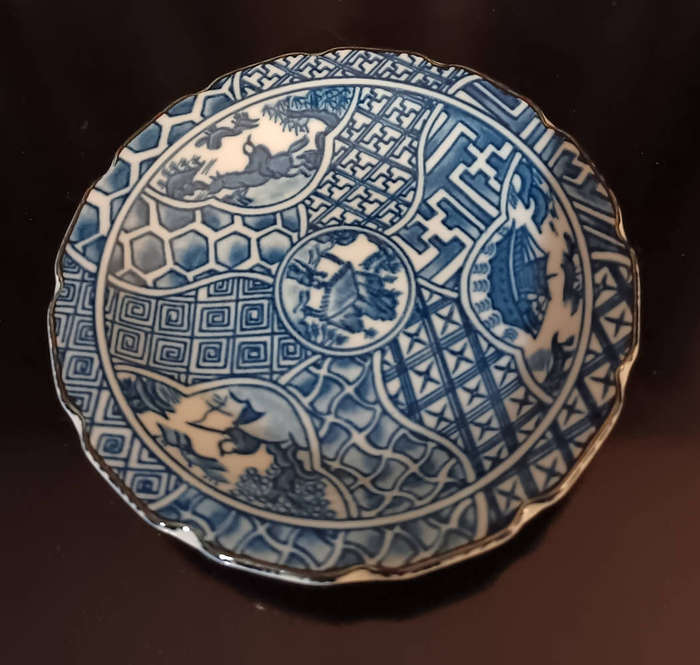





Arita blue and white porcelain plate
Check my rate
| Main centres: | 1-3 business days |
| Regional areas: | 3-4 business days |
| Remote areas: | 3-5 business days |






| Main centres: | 1-3 business days |
| Regional areas: | 3-4 business days |
| Remote areas: | 3-5 business days |
A small Japanese Arita blue and white porcelain plate, likely from the Edo period (late 17th century), made in the town of Arita, Saga Prefecture, Japan.
The plate is marked with a handwritten cobalt blue signature, likely indicating the artist or kiln.
This plate is an example of Imari ware, specifically Arita porcelain, which was produced in the Arita kilns of Hizen province, Japan. It replicates the style of Chinese Kraak ware.
The plate features underglaze blue decoration, often depicting motifs such as landscapes with birds and flowering plants like peonies, surrounded by panels of flowers and precious objects around the rim.
Arita porcelain, including Imari ware, gained prominence when the Dutch East India Company sought alternatives to Chinese porcelain during a period of restricted maritime trade in Qing China.
Imari ware was widely exported and influenced European porcelain production, particularly during the 17th and 18th centuries.
Arita dishes from the Edo period are sought after by collectors.